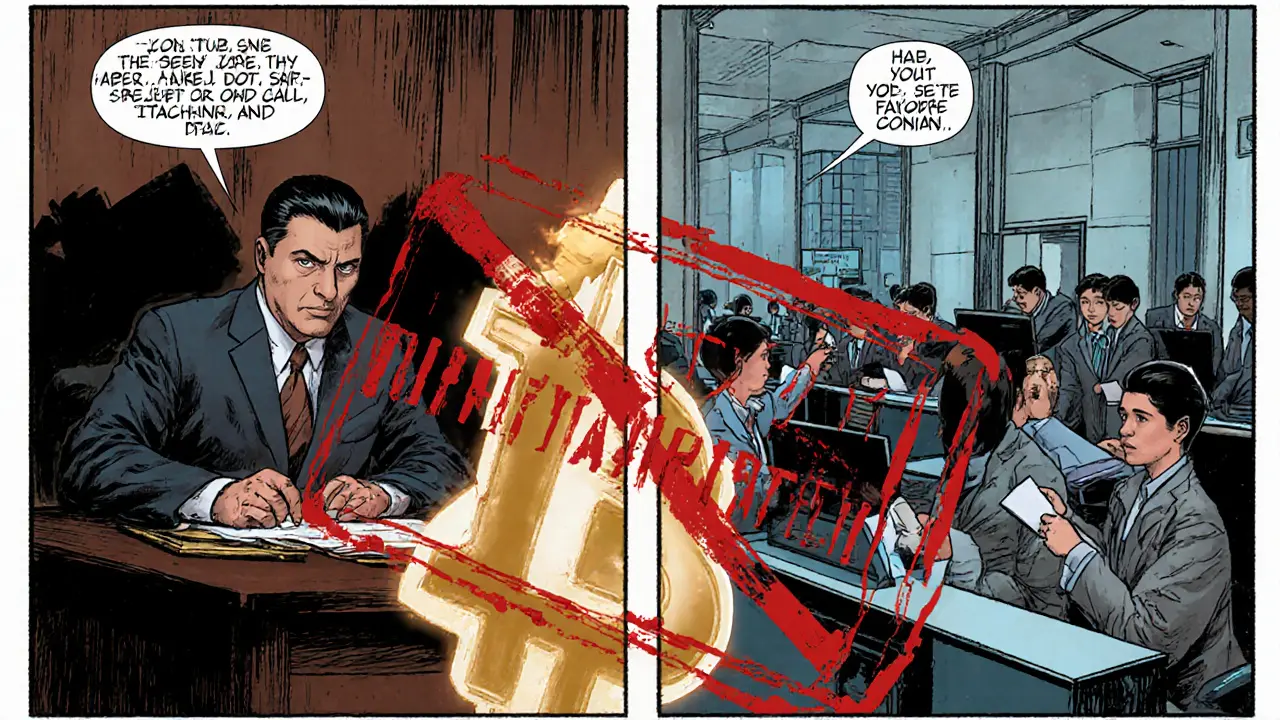Chinese Mining Ban: What It Means for Crypto and the Planet
When talking about Chinese mining ban, you’re looking at the sweeping policy that forced most of the world’s hashpower out of mainland China. Chinese mining ban, a 2021‑2022 crackdown that halted new crypto mining licenses, shut down existing farms, and pushed miners to relocate or shut down. Also known as China crypto mining crackdown, it dramatically altered global mining geography and sparked a race for greener, more compliant operations. In plain terms, the ban turned a quiet, China‑dominated landscape into a worldwide scramble for power, regulation, and public trust.
One of the biggest ripples came from Proof of Work, the consensus mechanism that requires miners to solve complex puzzles, consuming massive electricity. The Chinese ban forced many PoW farms to move to countries with cheaper energy, like the U.S., Kazakhstan, and Iran, reshaping the global hash rate distribution. This shift also forced developers to rethink energy‑heavy designs and consider alternatives like Proof of Stake.
Energy usage isn’t just a cost issue; it’s an Environmental Impact, the carbon footprint and ecological strain caused by high‑power mining rigs running 24/7. Before the ban, China’s coal‑heavy grids powered much of the network, drawing criticism from NGOs and investors. After the crackdown, the industry faced pressure to adopt renewable sources, improve efficiency, and publicly report emissions. The result? A louder conversation around sustainable mining and greener blockchain projects.
Regulatory Waves Triggered by the Ban
Governments worldwide responded to the vacuum left by China with new Crypto Regulation, laws and guidelines that aim to control mining, trading, and token issuance. The U.S. tightened reporting requirements, while the EU pushed the MiCA framework, and Asian hubs like Singapore and Dubai offered clear licensing pathways. These rules often reference the Chinese mining ban as a cautionary tale – showing why transparent energy sourcing and compliance matter.
From a business angle, the ban also reshaped the decentralized exchange (DEX) landscape. As miners sought new jurisdictions, they partnered with local DEXs to provide liquidity and swap services, especially on networks like Polygon and Arbitrum. This created fresh opportunities for projects like PancakeSwap v3 on Ethereum or LFJ v2 on Arbitrum, both highlighted in our article collection. The migration underscored how mining policy can indirectly boost DEX adoption.
For investors, the ban introduced a new risk factor: geographic concentration. Before 2021, a single country held over 60% of the network’s hash power. After the crackdown, that figure dropped below 30%, spreading risk but also adding volatility as new regions grapple with local power costs and regulatory clarity. Understanding these dynamics is crucial when evaluating PoW assets like Bitcoin or emerging PoW altcoins.
Another side effect is the rise of “green mining” initiatives. Companies now tout solar‑powered farms, waste‑heat recycling, and partnerships with renewable energy providers. This trend aligns with broader ESG (Environmental, Social, Governance) criteria that institutional investors increasingly demand. The Chinese mining ban acted as a catalyst, turning sustainability from a niche concern into a mainstream selling point.
Looking ahead, the ban could set a precedent for future governmental actions. If another major economy decides to limit mining for environmental or financial stability reasons, the industry will likely repeat the relocation pattern we saw after China’s crackdown. Keeping an eye on policy shifts, energy market trends, and regulatory updates will help you stay ahead of the curve.
Below you’ll find a curated set of articles that dig deeper into each of these angles – from the technical side of Proof of Work to the latest crypto regulation moves, from environmental impact assessments to DEX reviews that benefited from the mining realignment. Use them as a toolbox to understand how the Chinese mining ban reshapes the whole crypto ecosystem and what that means for your next move.




